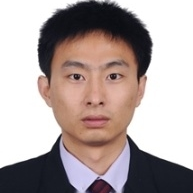Recent Research on Engineering Acoustic Metamaterials
A special issue of Crystals (ISSN 2073-4352). This special issue belongs to the section "Inorganic Crystalline Materials".
Deadline for manuscript submissions: closed (20 January 2024) | Viewed by 1814
Special Issue Editors
Interests: gearbox; bearing; dynamics; vibrations; finite element bearing; power loss
Special Issues, Collections and Topics in MDPI journals
Interests: acoustics metamaterials; phononic crystal; waveguides; acoustic metasurface
Interests: sound propagation; phononic crystal; acoustic metamaterial; graded; thermoviscous dissipation
Special Issue Information
Dear Colleagues,
Acoustic metamaterials (AMs) have undergone rapid development since the turn of the century, and a plethora of novel and/or interesting AMs have emerged, such as those with negative elastic modulus, negative mass density, and negative refraction as well as cloaks, mirages, superlenses, metadiffusers, metasurfaces, rectifiers, and basic logic gates. It is worth noting that in this Special Issue, the concept of AMs is extended to include phononic crystals (PCs). On the other hand, the emergence and development of AMs bring new vitality into the study of traditional acoustic problems, such as noise pollution. To realize novel or specific functions, the structures of AMs are usually complex. Thanks to the technology of additive manufacturing, the preparation of AMs with complex structures is feasible. Consequently, AMs take a further step toward application in engineering. This Special Issue welcomes contributions in the field of acoustic metamaterials and their applications in engineering, including structures, materials, experimental methods, optimization methods, calculation methods, and physical mechanisms.
Prof. Dr. Jing Liu
Prof. Dr. Jianning Han
Dr. Xiuhai Zhang
Dr. Ting Wang
Guest Editors
Manuscript Submission Information
Manuscripts should be submitted online at www.mdpi.com by registering and logging in to this website. Once you are registered, click here to go to the submission form. Manuscripts can be submitted until the deadline. All submissions that pass pre-check are peer-reviewed. Accepted papers will be published continuously in the journal (as soon as accepted) and will be listed together on the special issue website. Research articles, review articles as well as short communications are invited. For planned papers, a title and short abstract (about 100 words) can be sent to the Editorial Office for announcement on this website.
Submitted manuscripts should not have been published previously, nor be under consideration for publication elsewhere (except conference proceedings papers). All manuscripts are thoroughly refereed through a single-blind peer-review process. A guide for authors and other relevant information for submission of manuscripts is available on the Instructions for Authors page. Crystals is an international peer-reviewed open access monthly journal published by MDPI.
Please visit the Instructions for Authors page before submitting a manuscript. The Article Processing Charge (APC) for publication in this open access journal is 2600 CHF (Swiss Francs). Submitted papers should be well formatted and use good English. Authors may use MDPI's English editing service prior to publication or during author revisions.
Keywords
- acoustic metamaterial
- phononic crystal
- wave propagation
- noise control
- sound absorption/insulation
- viscous/thermal dissipation
- subwavelength
- resonance
- cloaking
- superlens






